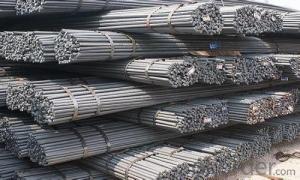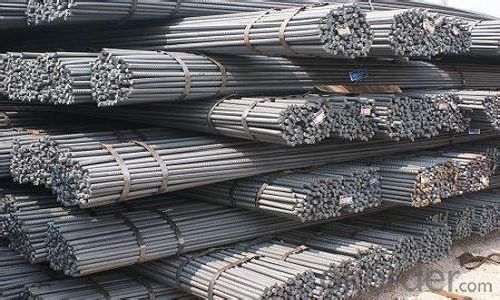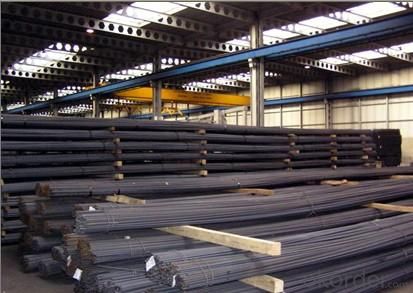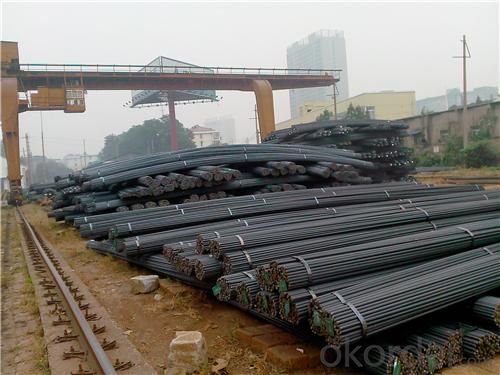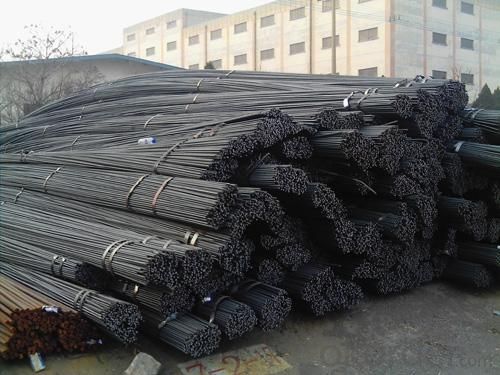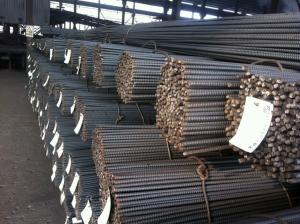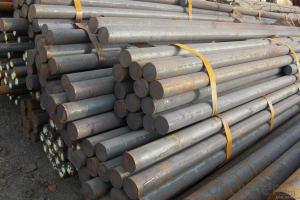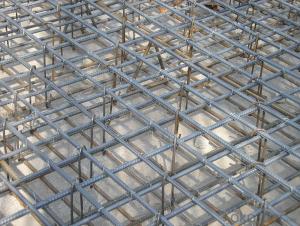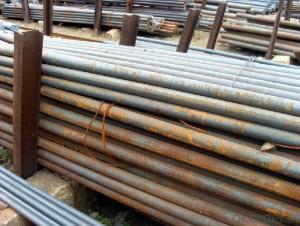ASTM deformed steel bar for construction
- Loading Port:
- Tianjin
- Payment Terms:
- TT OR LC
- Min Order Qty:
- 25 m.t.
- Supply Capability:
- 10000 m.t./month
OKorder Service Pledge
OKorder Financial Service
You Might Also Like
Product Description:
Specifications of HRB400 Deformed Steel Bar:
Standard | GB | HRB400 | |
Diameter | 6mm,8mm,10mm,12mm,14mm,16mm,18mm,20mm, 22mm,25mm,28mm,32mm,36mm,40mm,50mm | ||
Length | 6M, 9M,12M or as required | ||
Place of origin | Hebei, China mainland | ||
Advantages | exact size, regular package, chemical and mechanical properties are stable. | ||
Type | Hot rolled deformed steel bar | ||
Brand name | DRAGON | ||
Chemical Composition: (Please kindly find our chemistry of our material based on HRB500 as below for your information)
Grade | Technical data of the original chemical composition (%) | ||||||
C | Mn | Si | S | P | V | ||
HRB400 | ≤0.25 | ≤1.60 | ≤0.80 | ≤0.045 | ≤0.045 | 0.04-0.12 | |
Physical capability | |||||||
Yield Strength (N/cm²) | Tensile Strength (N/cm²) | Elongation (%) | |||||
≥400 | ≥570 | ≥14 | |||||
Theoretical weight and section area of each diameter as below for your information:
Diameter(mm) | Section area (mm²) | Mass(kg/m) | Weight of 12m bar(kg) |
6 | 28.27 | 0.222 | 2.664 |
8 | 50.27 | 0.395 | 4.74 |
10 | 78.54 | 0.617 | 7.404 |
12 | 113.1 | 0.888 | 10.656 |
14 | 153.9 | 1.21 | 14.52 |
16 | 201.1 | 1.58 | 18.96 |
18 | 254.5 | 2.00 | 24 |
20 | 314.2 | 2.47 | 29.64 |
22 | 380.1 | 2.98 | 35.76 |
25 | 490.9 | 3.85 | 46.2 |
28 | 615.8 | 4.83 | 57.96 |
32 | 804.2 | 6.31 | 75.72 |
36 | 1018 | 7.99 | 98.88 |
40 | 1257 | 9.87 | 118.44 |
50 | 1964 | 15.42 | 185.04 |
Usage and Applications of HRB400 Deformed Steel Bar:
Deformed bar is widely used in buildings, bridges, roads and other engineering construction. Big to highways, railways, bridges, culverts, tunnels, public facilities such as flood control, dam, small to housing construction, beam, column, wall and the foundation of the plate, deformed bar is an integral structure material. With the development of world economy and the vigorous development of infrastructure construction, real estate, the demand for deformed bar will be larger and larger..
Packaging & Delivery of HRB400 Deformed Steel Bar:
Packaging Detail: products are packed in bundle and then shipped by container or bulk vessel, deformed bar is usually naked strapping delivery, when storing, please pay attention to moisture proof. The performance of rust will produce adverse effect.
Each bundle weight: 2-3MT, or as required
Payment term: TT or L/C
Delivery Detail: within 45 days after received advanced payment or LC.
Label: to be specified by customer, generally, each bundle has 1-2 labels
Trade terms: FOB, CFR, CIF
Deformed Steel Bar in container
Deformed Steel Bar in factory
Note:
1. Our products are produced according to national standard (GB), if not, supply according to national standards (GB) or agreement as customer required.
2. Other Grade and Standard Deformed Steel Bar we can supply:
Grade: GR40/GR60, G460B/B500A/B500B/B500C,BST500S
Standard: ASTM, BS, DIN
The Minimum Order Quantity of these products is high, and need to be confirmed.
3. We can not only supply Deformed Steel Bar; if you need anything about building materials, please contact us for further information.
4. Please send us your detail specifications when inquire. We will reply to you as soon as possible. We sincerely hope we can establish a long stable business relationship.
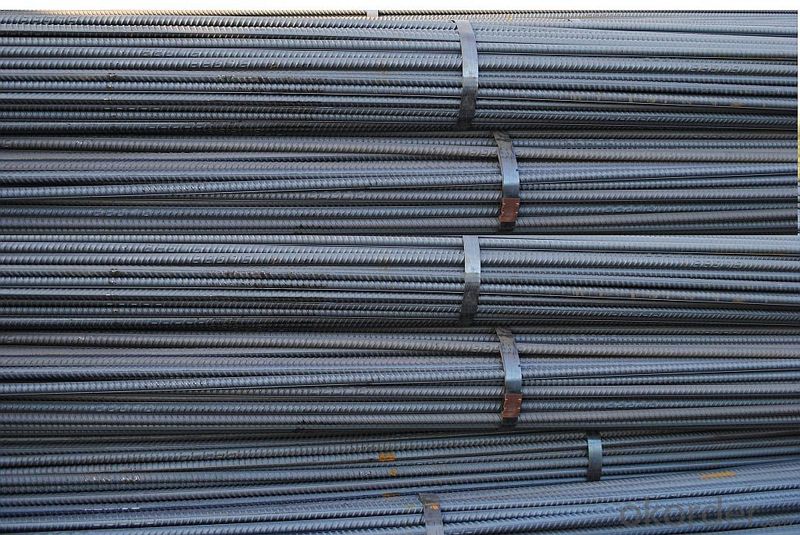
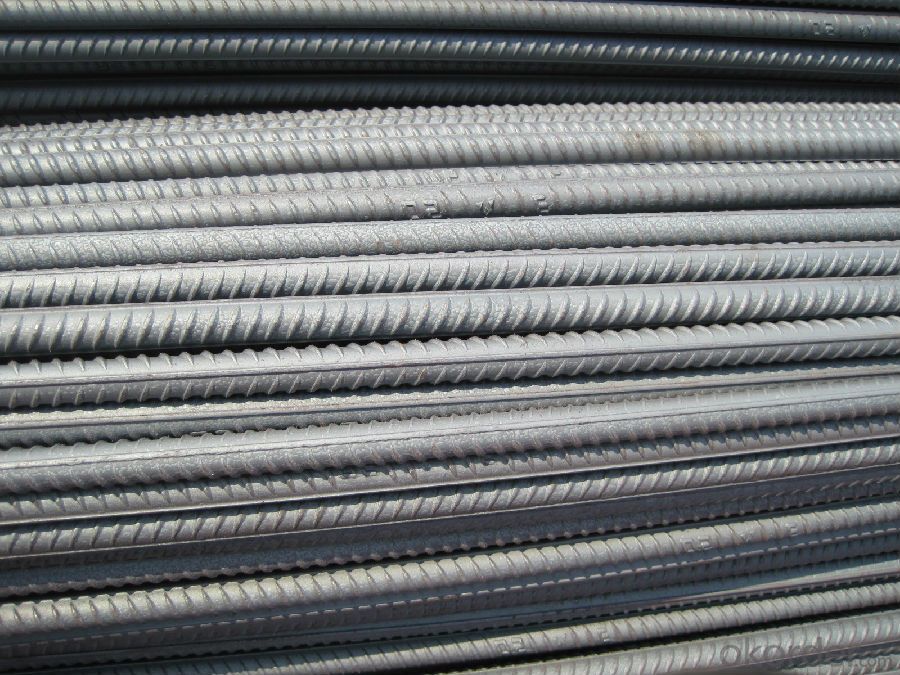
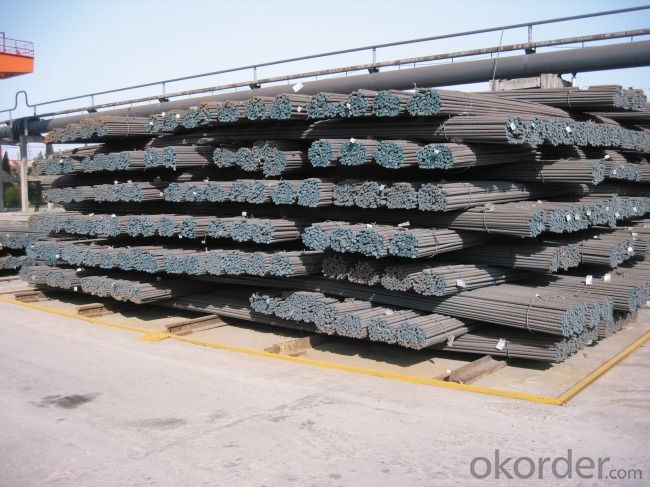
- Q: Are steel rebars suitable for reinforcement in swimming pools?
- Yes, steel rebars are suitable for reinforcement in swimming pools.
- Q: Can steel rebars be used in the construction of shopping centers?
- Indeed, steel rebars possess the capability to be utilized in the construction of shopping centers. These rebars, known as reinforcing bars, are extensively employed in the construction sector to fortify concrete structures. Shopping centers typically necessitate robust, resilient, and enduring infrastructure, and steel rebars furnish the indispensable strength and reinforcement essential for supporting the building's weight and load. They effectively thwart cracks, augment structural stability, and heighten the overall durability of the construction. Furthermore, steel rebars can be effortlessly molded and trimmed to conform to the specific design prerequisites of a shopping center, rendering them an adaptable and pragmatic choice for construction projects.
- Q: Are thread steels of coarse steel?
- The thread steel is not coarse steel and the thread steel belongs to the steel. Rough steel refers to the billet after casting steel. The billet has been rolled into various shapes of steel, including plates, profiles, tubes and so on.
- Q: What is the role of steel rebars in ensuring occupant safety?
- The role of steel rebars in ensuring occupant safety is crucial as they provide strength, stability, and reinforcement to concrete structures. By reinforcing concrete with steel rebars, they enhance the structural integrity of buildings, bridges, and other infrastructure, making them more resistant to external forces such as earthquakes, heavy loads, and impacts. Steel rebars help prevent the collapse of structures, reducing the risk of injury or fatality to occupants during unexpected events or accidents.
- Q: What are the guidelines for using steel rebars in pre-stressed or post-tensioned concrete elements?
- The guidelines for using steel rebars in pre-stressed or post-tensioned concrete elements involve several key considerations to ensure structural integrity and performance. 1. Design and Engineering: The first step is to consult with a qualified structural engineer who specializes in pre-stressed or post-tensioned concrete design. They will determine the appropriate size, spacing, and type of rebars required for the specific project based on the structural loads, design requirements, and desired performance. 2. Material Selection: The rebars used in pre-stressed or post-tensioned concrete elements should conform to the relevant industry standards, such as ASTM A615 or ASTM A706 for reinforcing steel. The rebars should have sufficient strength, ductility, and corrosion resistance to withstand the stresses and environmental conditions. 3. Placement and Anchorage: The rebars need to be accurately placed and anchored within the concrete elements. The specific placement and anchorage requirements will depend on the project's design and engineering specifications. The rebars should be properly aligned and secured to ensure effective transfer of forces to the concrete. 4. Tensioning Process: For pre-stressed concrete elements, the rebars are tensioned before the concrete is poured. This process involves applying a predetermined amount of force to the rebars using specialized jacks or hydraulic systems. The tensioning force should be carefully controlled to achieve the desired amount of pre-stress and avoid overloading the rebars or damaging the concrete. 5. Post-Tensioning: In the case of post-tensioned concrete elements, the rebars are tensioned after the concrete has hardened. This is typically done by passing the rebars through ducts or sleeves within the concrete and applying tension using hydraulic jacks. The post-tensioning force should be carefully calibrated to achieve the desired structural performance and avoid excessive strain on the rebars or the concrete. 6. Quality Control and Inspection: Throughout the construction process, regular quality control and inspection should be carried out to ensure compliance with design specifications and industry standards. This includes verifying the correct placement, alignment, and tensioning of the rebars, as well as checking for any defects or damage. 7. Maintenance and Durability: To ensure the long-term durability and performance of pre-stressed or post-tensioned concrete elements, proper maintenance is crucial. This may involve periodic inspections, maintenance of protective coatings, and addressing any signs of corrosion or deterioration promptly. By following these guidelines, construction professionals can ensure the safe and effective use of steel rebars in pre-stressed or post-tensioned concrete elements, resulting in structurally sound and durable concrete structures.
- Q: How much is the weight of 6mm thread steel KG?
- Multiple objects can be hung, not only to see the hook itself, the bearing strength is not enough, the hook is nothing, even with the bearing down together is possible.
- Q: What are lap splices in steel rebars?
- Lap splices in steel rebars refer to the method of connecting two rebars together by overlapping them and securing them with steel tie wires or mechanical splicing techniques. This is commonly done to create a continuous reinforcement in concrete structures, ensuring strength and stability.
- Q: Can steel rebars be used in infrastructure projects?
- Yes, steel rebars can be commonly used in infrastructure projects. Steel rebars provide strength and durability to concrete structures, making them ideal for reinforcing various types of infrastructure such as bridges, buildings, highways, and tunnels. They help enhance the load-bearing capacity and structural integrity of these projects, ensuring their long-term stability and safety.
- Q: Can steel rebars be used in structures with high chemical resistance requirements?
- Steel rebars can be used in structures with high chemical resistance requirements, but it is important to consider the specific chemical environment in which the structure will be exposed. While steel rebars are generally resistant to many common chemicals, certain aggressive chemical substances, such as acids or alkaline solutions, can cause corrosion and degradation of the rebar over time. In such cases, it may be necessary to use alternative materials like stainless steel rebars or fiber-reinforced polymer (FRP) rebars, which possess superior resistance to chemical attack. Additionally, proper design, construction, and maintenance practices should be implemented to mitigate the effects of chemical exposure on steel rebars. Factors such as the type and concentration of chemicals, temperature, humidity, and exposure duration should all be carefully considered to determine the suitability of steel rebars for a structure with high chemical resistance requirements. Consulting with a structural engineer or corrosion specialist is recommended to ensure the best choice of materials for the specific chemical environment.
- Q: What are the different uses of wire rod and thread steel?
- According to statistics, China's construction industry accounts for about 50% of the total steel consumption. As one of the resources consuming industries, the construction industry must adjust the consumption structure of construction materials, energetically apply high-strength steel bars and high-performance coagulation, and take the road of economical development. If the current use of steel and concrete to raise an intensity level, it can bring enormous savings to society. For example, by calculation, according to the standard requirements, if the reinforced concrete leading force steel strength increased to 400-500N/mm2, then can be in the current level of steel consumption to save about 10%.
Send your message to us
ASTM deformed steel bar for construction
- Loading Port:
- Tianjin
- Payment Terms:
- TT OR LC
- Min Order Qty:
- 25 m.t.
- Supply Capability:
- 10000 m.t./month
OKorder Service Pledge
OKorder Financial Service
Similar products
Hot products
Hot Searches
Related keywords
